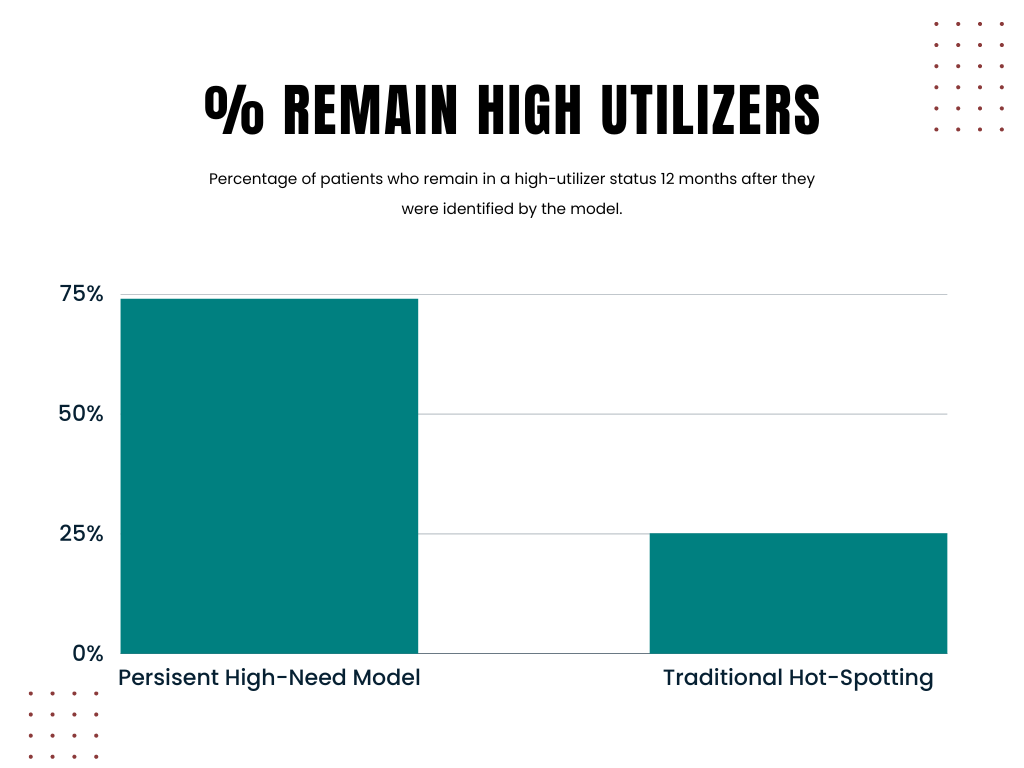
Persistent High Need Healthcare Users
Persistent High Need (PHN) healthcare utilizers are people who have demonstrated a behavior of utilizing healthcare services at a higher than average rate. This project was developed to identify these patients and target them for outreach and intervention.
The PHN model improves on traditional hot-spotting models by looking at the utilization behavior of a patient rather than just their overall utilization. Traditional hot-spotting models simply targeting the highest utilizers are susceptible to the regression to the mean effect where most patients identified by traditional models will experience a much lower utilization without any intervention at all. This phenomenon has been observed among frequent ER utilizers and hospital super-utilizers.
By incorporating utilization behavior the Persistent High Needs model is more resilient to regression to the mean effects. Nearly 74% of patients identified by the Persistent High Needs model will continue to have a high utilization rate after 12 months. This is compared to ~25% of patients identified by traditional hot-spotting models where most members naturally improve without an intervention. The result is a more actionable cohort of patients to target for an intervention.
Persistent high needs solves for data fatigue within care management programs. The Persistent High Needs model produces a narrowly defined list of patients that are actionable. This allows care managers to focus on the patients that are most likely to benefit from an intervention.
Finally, the Persistent High Needs model uncovers actoinable patients. When calculating utilization patterns adjustments are made for patients with catastrophic healthcare conditions and malignancies. Patients with these conditions are likely known to the care management program and are likely receiving specialized care. Utilization is also adjsuted to exclude high-cost pharmaceuticals so that a patient does not end up on the list because they require regular infusions of a high-cost drug.
Building a clinical profile for patients identified by the model found that the predominant pattern was members suffering from a pain-related condition along with a mental health condition (e.g. depression, anxiety). This was a cohort of patients that were invisible to many care management programs:
“We weren’t always reaching the right members. In the past, we identified at-risk members by looking for those who had come from the hospital after an acute illness or catastrophic event. But, when 3M showed us our list of persistent high-need members, we realized that this is a completely different population than we’re used to serving.” source
Wrapping Up
The Persistent High-Need model identifies a patient cohort that is likely to continue to be high-utilizers, clinically meaningful, and narrowly defined enough to be actionable. Chronic pain is one of the largest drivers of healthcare utilization in the United States. The PHN model is the first of its kind to proactively identify a vulnerable patient largely suffering from chronic pain conditions who are routinely getting services, but no relief from the healthcare system who may benefit from extra support.


